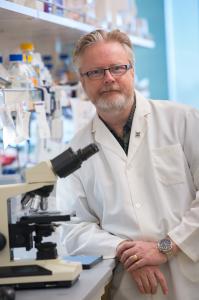UH Cancer Center advances research on movement and spread of cancer cells
University of Hawaiʻi at MānoaA team of University of HawaiÊ»i Cancer Center researchers has identified how some cancer cells are made to move during metastasis. The research, led by Joe W. Ramos, deputy director of the UH Cancer Center at the University of HawaiÊ»i at MÄnoa, provides a better understanding of how cancer spreads and may create new opportunities for cancer drug development.
Metastasis causes the deaths of 90 percent of cancer patients. The spread of cancer by metastasis is driven by a set of mutant proteins called oncogenes, which causes cancer cells to multiply uncontrollably and promotes their ability to move. How oncogene activity specifically directs the increased movement and metastasis is highly complex and remains largely unknown.
Ramos and four collaborators in the Cancer Biology Program investigated how these oncogenes and related signals lead to dysregulation of normal processes within the cell and activate highly mobile and invasive cancer cell behavior.
The findings, published in Proceedings of the National Academy of Sciences, define a mechanism in which the oncogenes turn on a protein called RSK2 that is required for cancer cells to move. The RSK2protein forms a signaling hub, which includes proteins called LARG and RhoA, that activates movement of the cancer cells.
These results significantly advance understanding of how cancer cells are made to move during metastasis and may provide more precise targets for drugs to stop cancer metastasis in patients where there are oncogenic mutations.
“These new data are very exciting,” said Ramos. “Blocking cancer invasion and metastasis remains a central challenge in treating patients. We anticipate that this research may lead to new therapeutic opportunities for brain tumors, melanoma and breast cancer among others. We are currently focused on these opportunities and developing new compounds to target this signaling hub.”
The work was done in collaboration with UH Cancer Center researchers Michelle L. Matter, Ling Jin, Won Seok Yang and Geng-Xian Shi.
For more information, visit: http://www.uhcancercenter.org

